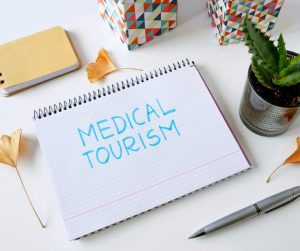San Raffaele research hospital:
In 1971, patients could start going to San Raffaele, which was Italy’s first private hospital. It was started with the goal of improving people’s health and happiness by coming up with new ways to practice medicine and doing cutting-edge research. Genetics, cell biology, and immunology were the first fields of study. San Raffaele research hospital In 1972, it was called a “Research Hospital” by Italy’s Ministry of Health. Since 1996, the Medical, Psychology, and Philosophical Schools of Vita-Salute San Raffaele University have all been based at the hospital.
The San Raffaele Hospital and Vita-Salute San Raffaele University are now in charge of patient care and research in Italy. San Raffaele research hospital Nearly 500 scientists work at the San Raffaele Hospital’s multidisciplinary research centre. They do research from the most basic to the most applied levels. The hospital has 1500 beds and uses the most advanced diagnostic and treatment methods.
Department of Urology:
Prof. Patrizio Rigatti started the department when he was Chief of the Department of Urology at San Raffaele Hospital from 1985 to 2013. Prof. Rigatti has studied urologic oncology and surgical treatments for both benign and cancerous prostatic diseases.
Prof. Francesco Montorsi was made head of the Urology Department in 2013. He is a teacher in the Urology Department at Vita-Salute San Raffaele University. Prof. Montorsi has focused his clinical and academic work on several subspecialties of urology, such as benign prostatic hyperplasia, urologic malignancy, and sexual dysfunctions. PubMed says that Professor Montorsi has written or helped write more than a thousand articles for scientific journals and a few book chapters.
January 2006 to December 2013:
The H-Index of Professor Montorsi has gone up to 109. From January 2006 to December 2013, Prof. Montorsi was the Editor-in-Chief of European Urology, the official journal of the EAU (impact factor: 14.976 in 2015). The European Association of Urology gives the Matula Prize to the urologist under the age of 40 who has done the most important scientific work. San Raffaele research hospital In 1998, this award went to Prof. Montorsi. In 2015, Prof. Montorsi was chosen to be the European Association of Urology’s Alternate Secretary General for Science (EAU).
About 4,000 people were admitted to and had surgery at San Raffaele Hospital’s Department of Urology the year before. Several urological diseases, like genitourinary tumours, benign prostatic hyperplasia (BPH), and sexual problems, are treated here. The hospital is known for being one of the first to use less invasive methods, like endoscopic and robotic surgery. San Raffaele research hospital On the faculty, you can find endocrinologists, cancer specialists, andrologists, and other types of urology specialists. San Raffaele research hospital also talks to world-famous experts in stone disease, urinary incontinence, and functional urology on a regular basis.
Urological Research Institute:
Together with the Urological Research Institute, the Department of Urology collects and analyzes clinical and biological data from all patients who have been treated for urological cancers. Over 10,000 patients have been correctly recorded in the prospective database of the Urological Research Institute for the past 25 years.
All patients who are treated at the Urological Department have their baseline characteristics, perioperative data, postoperative data, patient-reported outcomes, and long-term follow-up data collected in a planned way. Six full-time data administrators are in charge of databases about sexual medicine, BPH, prostate cancer, kidney cancer, and bladder cancer. The Urological Research Institute also has research facilities, space for biobanking, and research tools and methods for both in-vitro and in-vivo research.
Also, prospectively collected blood, urine, and tissue samples are matched with clinical data from databases that are specific to each disease. San Raffaele research hospital Urological Research Institute has 8 full-time technicians and PhDs working at its pre-clinical and translational facilities.








